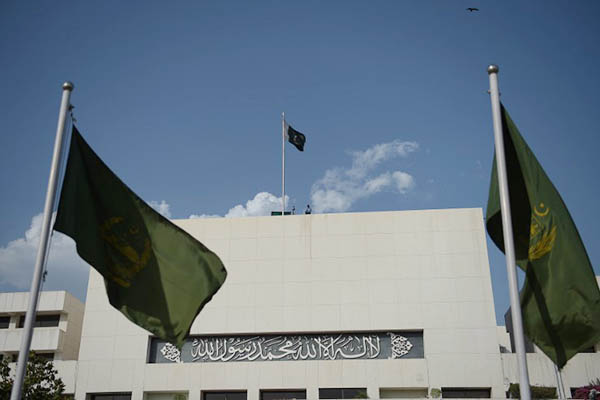
File photo. Aamir Qureshi—AFP
Former finance minister Miftah Ismail, writing in daily Dawn, has compared Pakistan’s progress with its regional neighbors, noting: “Bangladesh, with a land mass the size of Sindh, half of which is underwater, is a resource-poor nation under a corrupt, authoritarian government. At the time of its separation, East Pakistan’s income per head was half that of West Pakistan. Today, it is ahead of Pakistan in income, exports, education, population-control, and life expectancy—in fact in almost all economic and social indicators.” Further, he laments that Pakistan’s per capita income is worse than every South Asian country, barring Nepal, and below even the average of the countries in sub-Saharan Africa. “In human development indicators such as education, infant mortality, etc., we do even worse.”
His plaint isn’t unique. Attaur Rehman, former chairman of the Higher Education Commission of Pakistan, has also signaled despair: “Pakistan often debates about whether we should have presidential or parliamentary democracy, or even a military dictatorship. Other countries have progressed under all three. We have done badly under all. The problem is not the type of government we have, it is that governance in Pakistan is just ineffective: in 75 years, our governments have not been able to deliver economic growth, security of life or property, education or health, or even clean drinking water.”
The hard truth is that successive governments in Pakistan have failed to solve any major problem, including the “circular debt” that plagues our economy. It went up during Pervez Musharraf’s regime to around Rs. 25 billion; jumping further to Rs. 500 billion under the Pakistan Peoples Party tenure of 2007-2013, and ballooned to Rs. 1,100 billion under PMLN in 2013-18. The four years of the Pakistan Tehreek-e-Insaf saw it rise to Rs. 2,500 billion, growing ever more unwieldy.
From the economy to population planning to illiteracy to extremism, Pakistan’s leaders appear unable to realize the state is breaking down. Adding to the woes are three “interconnected” problems: a poor education system that has fostered massive illiteracy with 22 million out-of-school children; corruption in the judicial system; and the stranglehold of dishonest politicians, facilitating elite-capture of meager resources. Endlessly repeated, the solution is “an honest and technologically competent leadership who understands and gives the highest priority to the development of a strong technology-driven knowledge economy.” This solution is oft-repeated by a lot of Pakistan’s “marginal” thinkers, but problems arise more quickly than they can be resolved. The government’s latest bid to ban “usury” from the banking system—a non-issue for the rest of the world—suggests Pakistan is actually moving backwards.
About 70 percent of Pakistan’s population of 225 million is below the age of 30 and the country’s educational system is no longer connected with the economic needs of the state. The anomaly of nuclear power receding into medieval decline is the most ironic attribute of the state, and a troubling prospect for the future of Pakistan.
